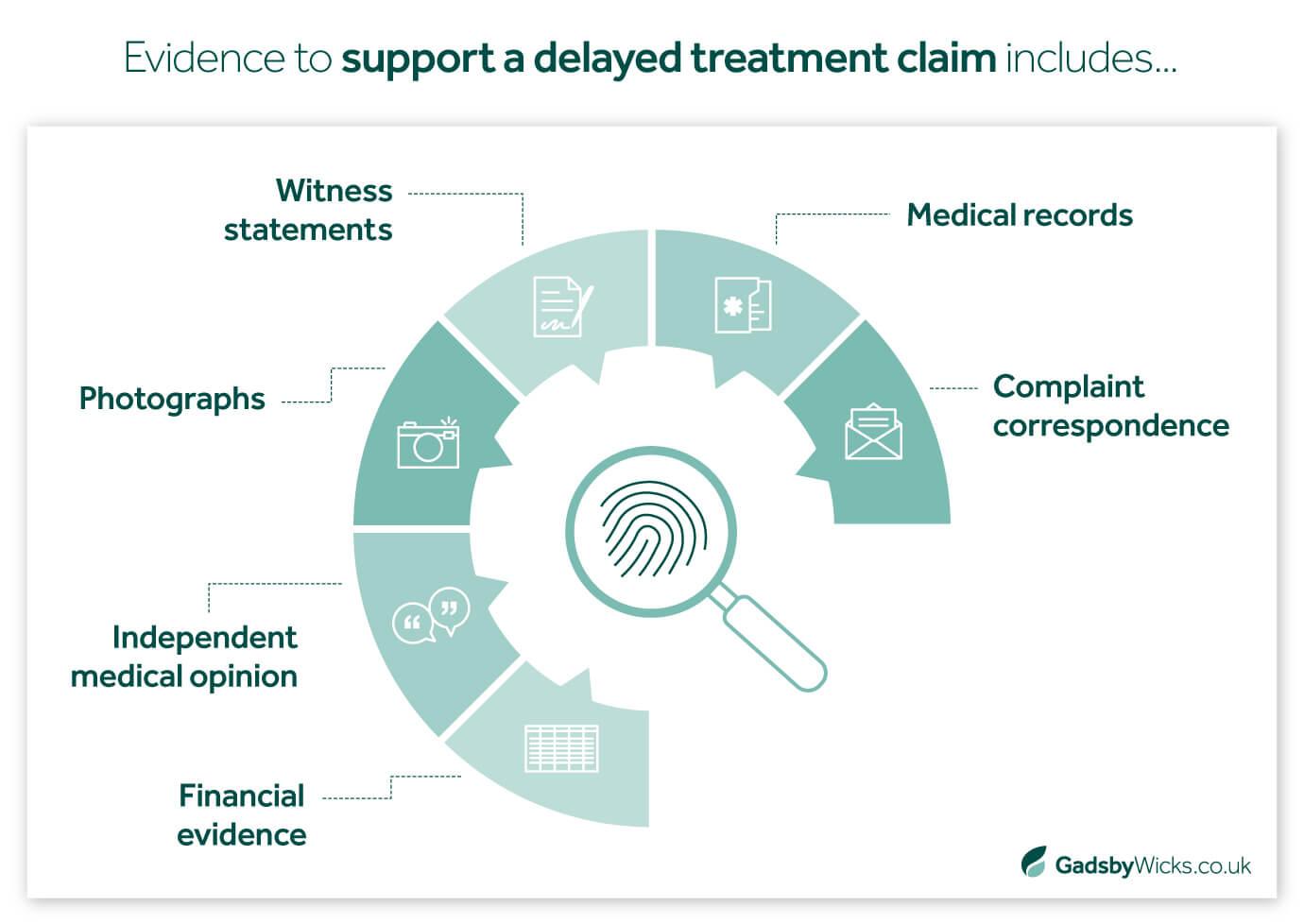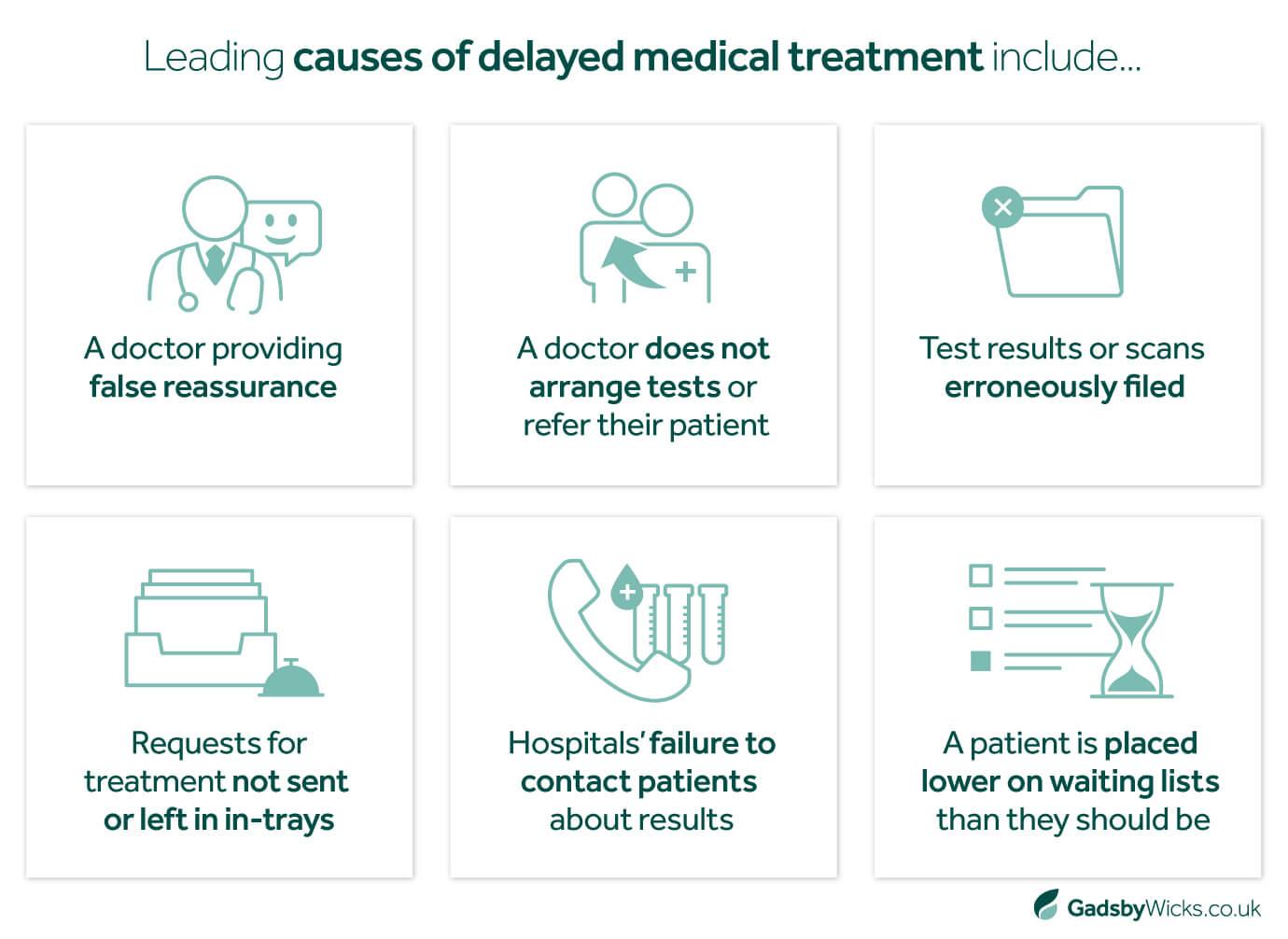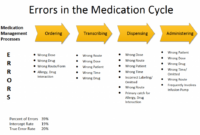Legal Steps for Hospital Delayed Treatment Cases: Navigating the complex legal landscape after experiencing delayed medical treatment can feel overwhelming. This guide cuts through the jargon, providing a clear roadmap for understanding your rights and pursuing potential compensation. We’ll explore the crucial elements of proving negligence, gathering compelling evidence, understanding statutes of limitations, and calculating damages. From expert testimony to navigating the court system or alternative dispute resolution, we’ll equip you with the knowledge to make informed decisions.
This isn’t just about legal technicalities; it’s about reclaiming control after a potentially life-altering experience. We’ll dissect real-world scenarios, analyze case studies, and offer practical advice to help you build a strong case and fight for the justice you deserve. Whether you’re facing delayed diagnosis, treatment, or follow-up care, understanding the legal steps involved is your first step towards recovery and closure.
Defining Negligence in Delayed Treatment
Medical negligence, in the context of delayed treatment, occurs when a healthcare professional’s actions or inactions deviate from the accepted standard of care, directly causing harm to the patient. This isn’t simply about a delayed diagnosis or treatment; it’s about a delay that demonstrably worsened the patient’s condition. Establishing negligence requires proving several key elements, and the specific standards can vary significantly based on the medical specialty involved.
Navigating the legal complexities of hospital delayed treatment cases requires a strategic approach. Understanding your rights is crucial, especially when medical negligence results in harm; this is equally true for situations like those covered in this article on Your Rights When Wrong Prescriptions Lead to Serious Injuries , where medication errors cause significant injury. Ultimately, building a strong case for delayed treatment hinges on meticulous documentation and expert legal counsel.
Elements of Negligence in Delayed Treatment Cases
To successfully claim negligence due to delayed treatment, a plaintiff must demonstrate four key elements: (1) a duty of care owed by the healthcare professional to the patient; (2) a breach of that duty by failing to meet the accepted standard of care; (3) a direct causal link between the breach of duty and the patient’s harm; and (4) actual damages suffered by the patient as a result of the delay. This requires a strong understanding of medical standards and the ability to present compelling evidence.
Navigating legal steps for hospital delayed treatment cases requires meticulous documentation and expert legal counsel. Similar challenges arise when dealing with medical negligence, such as a medication error; understanding how to proceed is crucial, which is why learning How to Handle a Medication Error Case can provide valuable insights. Ultimately, both situations demand a proactive approach to protect your rights and secure the best possible outcome.
Examples of Negligent Delayed Treatment
Several scenarios illustrate negligent delayed treatment. For example, a delay in diagnosing appendicitis that leads to a ruptured appendix and subsequent infection clearly demonstrates negligence. Similarly, a delay in treating a stroke that results in permanent neurological damage, or a delayed cancer diagnosis resulting in a less favorable prognosis, all fall under this category. The key is demonstrating that the delay directly caused or exacerbated the patient’s injuries.
Standards of Care in Delayed Treatment Cases
The standard of care, meaning the level of skill and care reasonably expected from a healthcare professional in a given specialty, varies considerably. A cardiologist, for instance, is held to a different standard than a general practitioner. Specialists are expected to possess and utilize the knowledge and skills within their area of expertise. This difference in standards necessitates the use of expert witnesses who are familiar with the specific area of medicine involved in the case.
Navigating the legal complexities of hospital delayed treatment cases requires a strategic approach. Understanding potential medical negligence, such as misdiagnosis or delayed diagnosis, is crucial. This often overlaps with issues like medication errors, and if you’ve suffered due to prescription mistakes, you should explore resources like this guide on Common Prescription Errors and How to Claim Compensation to understand your rights.
Ultimately, securing compensation for medical negligence requires meticulous documentation and expert legal counsel to build a strong case for delayed treatment claims.
Gathering Evidence for a Delayed Treatment Case
Building a successful delayed treatment case requires meticulous evidence gathering. This goes beyond simply obtaining medical records; it involves strategically acquiring and presenting evidence that convincingly demonstrates negligence and its consequences. A well-organized approach is crucial to maximizing the chances of a favorable outcome.
Key Evidence in Delayed Treatment Cases
Crucial evidence includes complete medical records (both electronic and paper), expert witness testimony from physicians specializing in the relevant area of medicine, detailed accounts of the patient’s symptoms and the timeline of events, and documentation of all medical expenses and lost wages incurred as a result of the delayed treatment. The more comprehensive and well-documented the evidence, the stronger the case.
Obtaining Medical Records and Expert Testimony
Acquiring medical records often involves formal requests to healthcare providers and institutions. Securing expert witness testimony requires identifying qualified specialists willing to review the case, offer opinions, and potentially testify in court. This process can be time-consuming and requires careful planning and legal expertise.
Preserving Electronic Health Records
Electronic health records (EHRs) require specific preservation techniques to ensure their admissibility in court. This involves creating secure backups, maintaining chain of custody documentation, and ensuring the data’s integrity hasn’t been compromised. Failure to properly preserve EHRs can severely weaken a case.
Evidence Checklist for Delayed Treatment Cases

- Complete patient medical records (both paper and electronic)
- Expert witness reports
- Detailed timeline of events, including dates, times, and descriptions of symptoms and treatment
- Documentation of all medical expenses
- Documentation of lost wages
- Photos or videos (if applicable)
- Witness statements
Statute of Limitations in Medical Malpractice Cases: Legal Steps For Hospital Delayed Treatment Cases
Statutes of limitations set deadlines for filing medical malpractice lawsuits. These vary significantly by state and can be complex, with exceptions and extensions possible under specific circumstances. Understanding these limitations is critical to ensuring timely legal action.
Variations in Statute of Limitations Across Jurisdictions
The statute of limitations for medical malpractice claims generally ranges from one to three years from the date of the negligent act or the date of discovery of the injury. However, specific state laws may include exceptions, such as the “discovery rule,” which extends the timeframe if the injury wasn’t discovered until later. This complexity necessitates consulting with legal counsel to determine the applicable statute of limitations in a specific jurisdiction.
Situations That Toll or Extend the Statute of Limitations
Several factors can toll (pause) or extend the statute of limitations. These often involve situations where the plaintiff was incapacitated, unaware of the injury, or actively misled by the defendant. Examples include cases involving minors, individuals with cognitive impairments, or situations where fraudulent concealment of evidence occurred.
Statute of Limitations for Medical Malpractice (Example – Four States)
| State | Statute of Limitations | Discovery Rule | Exceptions |
|---|---|---|---|
| California | 1-3 years | Yes | Minors, etc. |
| Florida | 2 years | Yes | Minors, etc. |
| New York | 2.5 years | Yes | Minors, etc. |
| Texas | 2 years | Yes | Minors, etc. |
Disclaimer: This table provides a simplified overview and should not be considered legal advice. Always consult with legal counsel for specific information regarding statute of limitations in your jurisdiction.
Damages in Delayed Treatment Cases
In successful delayed treatment cases, plaintiffs can recover various types of damages to compensate for their losses. These damages aim to restore the plaintiff to their pre-injury condition, as much as possible, financially and otherwise. Accurate calculation and presentation of these damages are vital for a successful claim.
Navigating legal steps for hospital delayed treatment cases can be complex, requiring meticulous documentation and expert legal counsel. Often, these cases involve a chain of events, and understanding the initial missteps is crucial. For instance, if a prescription error triggered the delay, you’ll need to understand the ramifications, as outlined in this helpful guide: What to Do When Prescription Errors Cause Complications.
This knowledge strengthens your case when pursuing legal action for delayed treatment, ensuring you’re fully equipped to address all contributing factors.
Types of Recoverable Damages
Damages can be categorized as economic and non-economic. Economic damages include readily quantifiable losses like medical expenses, lost wages, and rehabilitation costs. Non-economic damages encompass less tangible losses such as pain and suffering, emotional distress, and loss of consortium (loss of companionship). Both types are critical to a comprehensive damage claim.
Calculating Damages

Calculating economic damages often involves gathering receipts, pay stubs, and expert testimony regarding future medical expenses and lost earning capacity. Non-economic damages are more subjective and often rely on expert testimony and the plaintiff’s testimony to establish the extent of their suffering.
Presenting Evidence of Damages
Presenting evidence of damages requires organized and clear documentation. This includes detailed records of medical bills, lost wages statements, and testimony from the plaintiff and expert witnesses who can corroborate the extent of their injuries and losses.
Examples of Damage Awards
- Case 1: $500,000 for delayed cancer diagnosis resulting in advanced stage cancer and extensive treatment.
- Case 2: $2 million for delayed stroke treatment leading to permanent disability and significant care needs.
- Case 3: $100,000 for delayed appendicitis diagnosis resulting in surgery and prolonged recovery.
Disclaimer: These are hypothetical examples and actual damage awards vary widely depending on the specifics of each case.
Expert Testimony in Delayed Treatment Cases
Expert medical testimony is crucial in delayed treatment cases. It bridges the gap between complex medical issues and legal understanding, providing the court with the necessary medical context to assess negligence and damages. The credibility and expertise of the chosen witness significantly impact the outcome.
Role and Importance of Expert Testimony, Legal Steps for Hospital Delayed Treatment Cases
Expert witnesses provide opinions on the standard of care, whether that standard was breached, and the causal link between the breach and the patient’s injuries. Their testimony provides the necessary medical foundation for the legal arguments. Without expert testimony, proving negligence in a medical malpractice case is exceedingly difficult.
Qualifications of a Medical Expert Witness
Expert witnesses must possess the appropriate medical qualifications, experience, and knowledge relevant to the case. Their credentials, publications, and experience in similar cases are thoroughly scrutinized by opposing counsel.
Effectively Presenting Expert Testimony
Effective presentation of expert testimony involves clear, concise explanations of complex medical concepts, supported by relevant medical literature and evidence. The expert must be able to withstand rigorous cross-examination.
Comparison of Expert Opinions
In some cases, multiple expert witnesses may offer differing opinions. This highlights the importance of thorough investigation and selecting credible experts who can effectively communicate their opinions and withstand scrutiny.
Filing a Medical Malpractice Lawsuit
Filing a medical malpractice lawsuit is a complex process requiring careful planning and adherence to legal procedures. Understanding the steps involved and the timelines is crucial for a successful outcome. This process involves several key stages, from filing the initial complaint to potentially going to trial.
Steps in Filing a Medical Malpractice Lawsuit
The process typically begins with filing a complaint outlining the allegations of negligence and the damages suffered. This is followed by serving the defendant (the healthcare provider), who then files an answer. Discovery, a crucial phase, involves exchanging information and evidence between both sides. This often includes interrogatories, depositions, and requests for production of documents. The case may settle at any point during this process, or it may proceed to trial.
Navigating the legal steps for hospital delayed treatment cases can be complex, requiring meticulous documentation and expert legal counsel. Similar situations arise in cases of medical negligence, such as those involving overdose, where seeking immediate legal help is crucial. If you or a loved one has suffered due to an overdose resulting from negligence, consider exploring resources like those offered at Legal Support for Overdose Cases Due to Negligence to understand your rights.
Understanding these processes is key to effectively pursuing your case, whether it involves delayed treatment or other forms of medical malpractice.
Serving the Defendant and Responding to the Answer
Serving the defendant involves formally notifying them of the lawsuit. The defendant’s answer is their formal response to the complaint, either admitting or denying the allegations.
The Discovery Process
Discovery involves gathering information and evidence through various methods such as interrogatories (written questions), depositions (oral testimony under oath), and requests for production of documents (requests for medical records, etc.). This phase is critical in gathering information to support the case.
Flowchart of a Medical Malpractice Lawsuit
A flowchart would visually depict the stages, starting with the filing of the complaint, proceeding through discovery, potential motions, settlement negotiations, and ultimately, trial or dismissal. Each stage would be represented by a box, with arrows indicating the flow of the process. This would provide a clear visual representation of the legal process.
Alternative Dispute Resolution (ADR)
Alternative dispute resolution (ADR) methods, such as mediation and arbitration, offer alternatives to traditional litigation. These methods can be more efficient and less costly than a full trial, but their effectiveness depends on the specific circumstances of the case and the willingness of both parties to participate.
Advantages and Disadvantages of ADR

ADR methods offer advantages like faster resolution, reduced costs, and increased control over the process. However, they may not be suitable for all cases, and the outcome may not be as predictable as a trial. The decision to pursue ADR involves careful consideration of these factors.
Comparison of Mediation and Arbitration
Mediation involves a neutral third party who facilitates communication and helps the parties reach a mutually agreeable settlement. Arbitration involves a neutral third party who hears evidence and makes a binding decision. The choice between these methods depends on the parties’ goals and preferences.
Factors to Consider When Choosing ADR
Factors influencing the choice of ADR include the complexity of the case, the strength of the evidence, the parties’ willingness to compromise, and the cost and time constraints. A thorough evaluation of these factors is essential before deciding on ADR.
Examples of Successful ADR Outcomes
Successful ADR outcomes in medical malpractice cases often involve settlements that compensate the plaintiff for their losses while avoiding the costs and uncertainties of a trial. The specifics of these settlements are typically confidential.
Illustrative Case Study: A Hypothetical Delayed Treatment Case
Consider a hypothetical case involving Mrs. Jane Doe, a 65-year-old woman experiencing chest pain. She visited Dr. Smith, her general practitioner, who initially dismissed her symptoms as indigestion. However, Mrs. Doe’s condition worsened over the next few days, and she eventually suffered a heart attack. Expert testimony later revealed that a timely diagnosis and treatment could have prevented the heart attack. Mrs. Doe’s resulting damages included extensive medical expenses, lost wages, and significant emotional distress. The legal strategy for the plaintiff would focus on demonstrating Dr. Smith’s negligence in failing to properly diagnose and treat Mrs. Doe’s condition, while the defense might argue that the delay did not directly cause the heart attack.
The plaintiff’s legal team would present evidence, including Mrs. Doe’s medical records, expert testimony from cardiologists confirming the negligence, and documentation of her medical expenses and lost wages. The defense might attempt to challenge the expert testimony or argue that Mrs. Doe’s pre-existing conditions contributed to the heart attack. The case would hinge on the ability of the plaintiff to prove a direct causal link between the delayed diagnosis and the heart attack. The court would ultimately decide whether Dr. Smith’s actions fell below the accepted standard of care and whether those actions caused Mrs. Doe’s injuries.
Successfully navigating the legal complexities of delayed treatment cases requires a strategic approach, combining thorough evidence gathering with a deep understanding of medical negligence laws. This guide has armed you with the knowledge to understand your options, from pursuing a lawsuit to exploring alternative dispute resolution. Remember, seeking expert legal counsel is crucial in these situations. Don’t let bureaucratic hurdles and complex legal processes deter you from pursuing the compensation you deserve. Your health and well-being matter, and understanding your rights is the first step towards securing your future.
FAQ Section
What constitutes sufficient evidence to prove delayed treatment caused harm?
Sufficient evidence typically includes medical records showing the delay, expert testimony establishing a causal link between the delay and the harm suffered, and documentation of the resulting damages (medical bills, lost wages, pain and suffering).
Can I sue a hospital for emotional distress caused by delayed treatment?
Yes, emotional distress is a recoverable form of damages in many medical malpractice cases. You’ll need to demonstrate a direct causal link between the delayed treatment and the emotional distress experienced.
What if I missed the statute of limitations? Are there any exceptions?
While missing the statute of limitations usually bars a lawsuit, some exceptions exist, such as if the injury wasn’t discovered until later (discovery rule) or if the defendant actively concealed information.
How much will a medical malpractice lawyer cost?
Most medical malpractice lawyers work on a contingency fee basis, meaning they only get paid if you win your case. The specific fee percentage varies by lawyer and jurisdiction.



